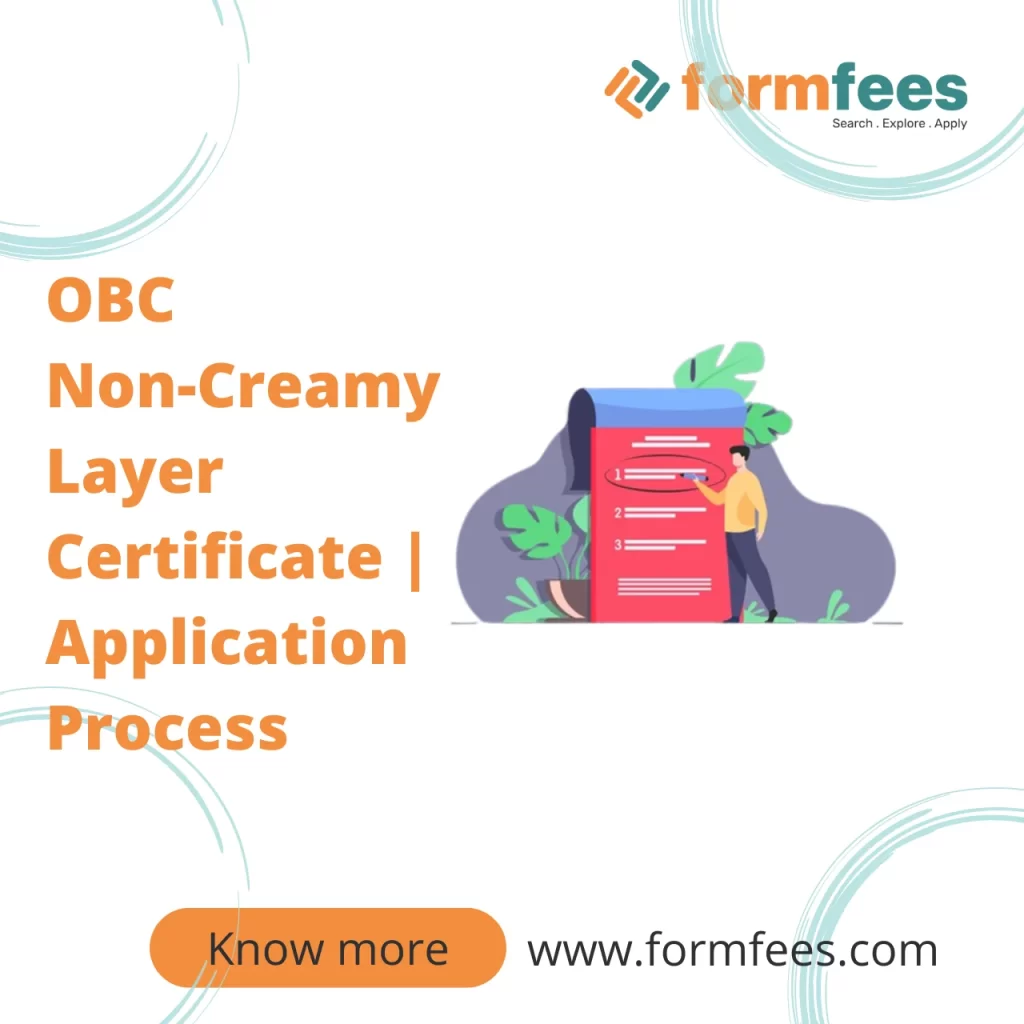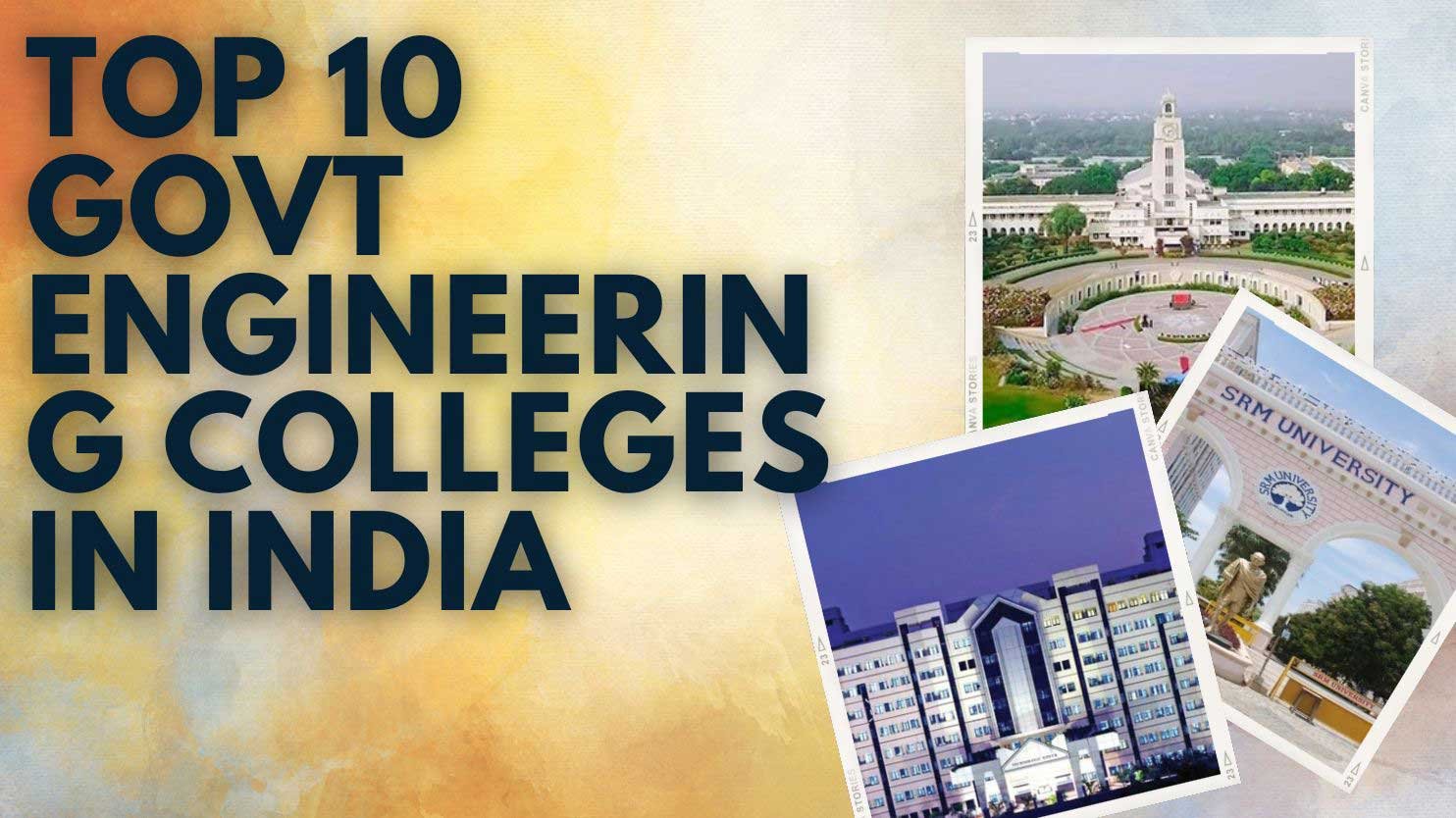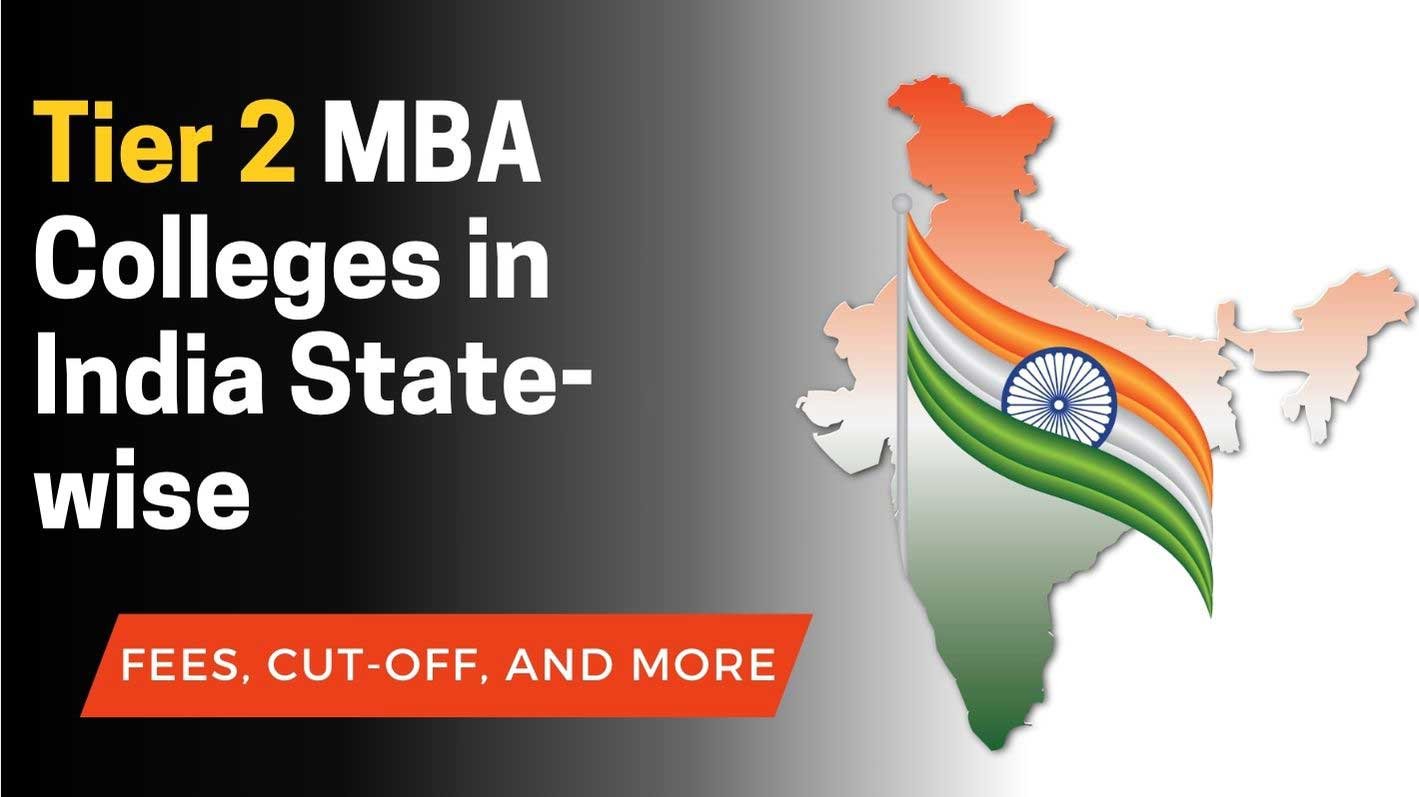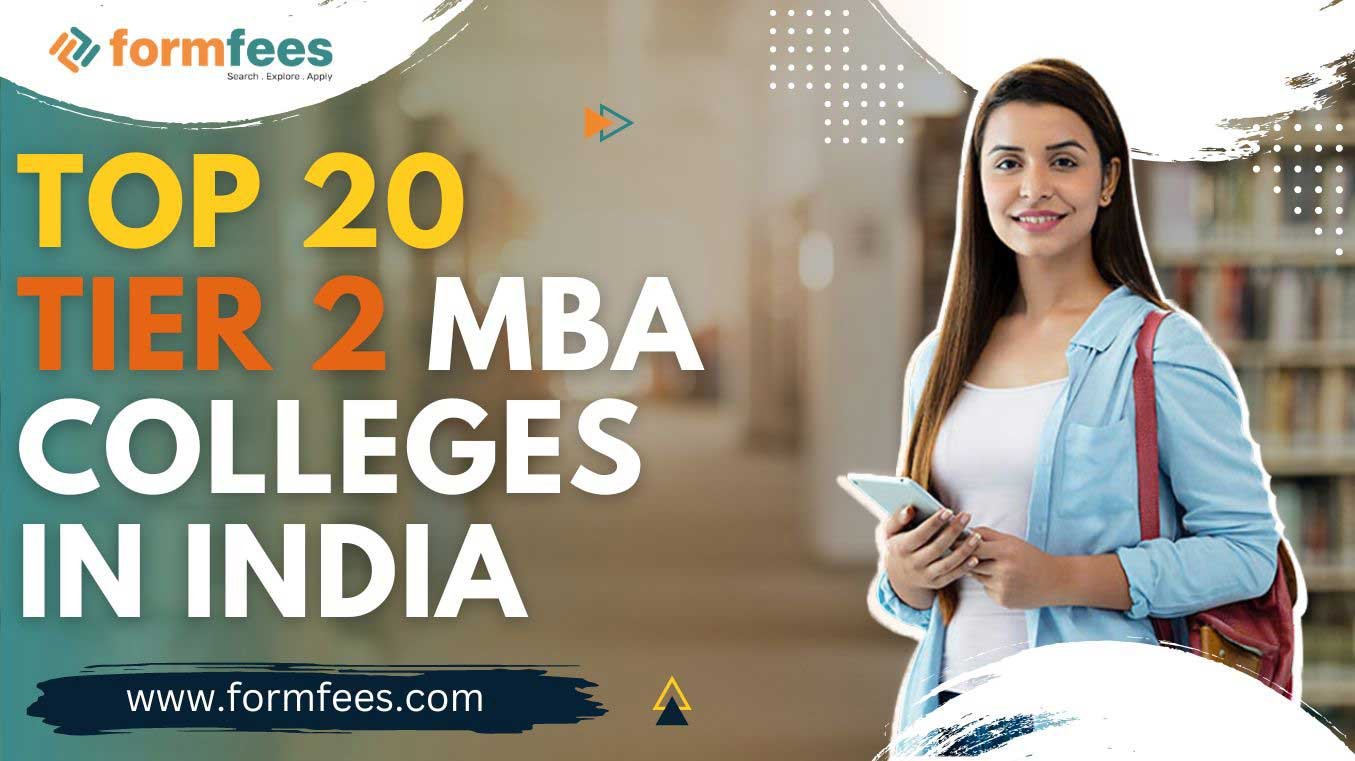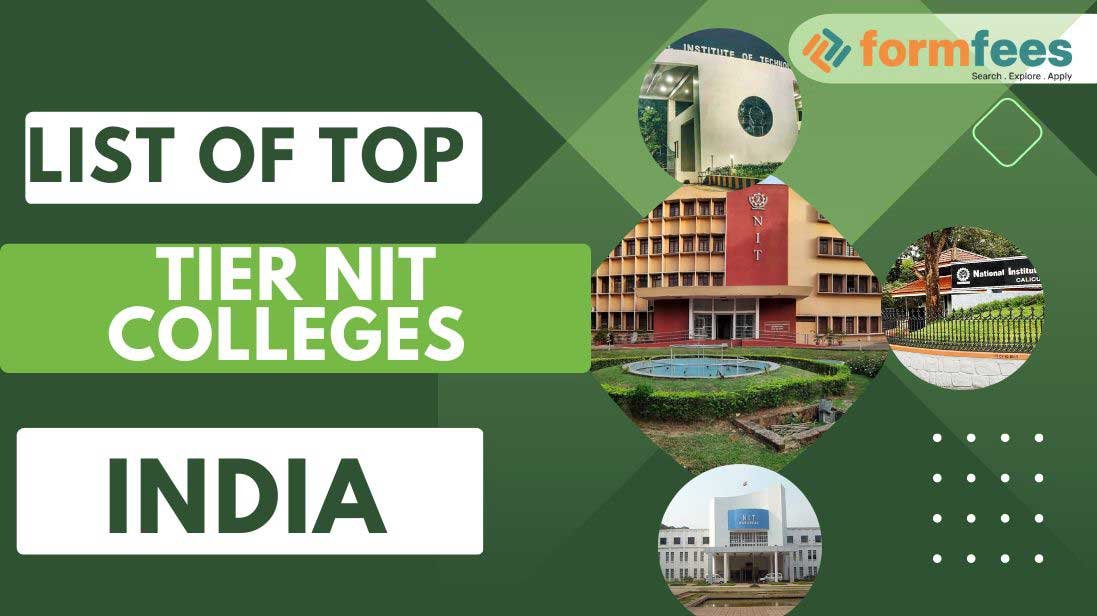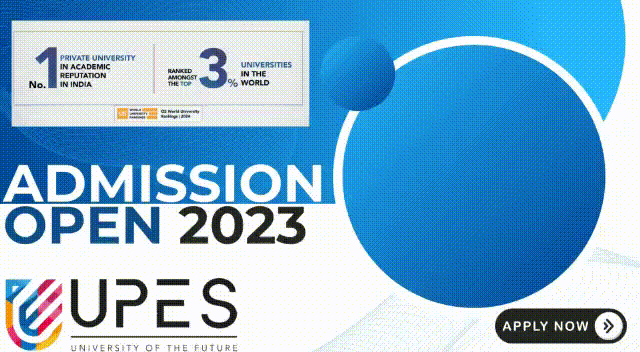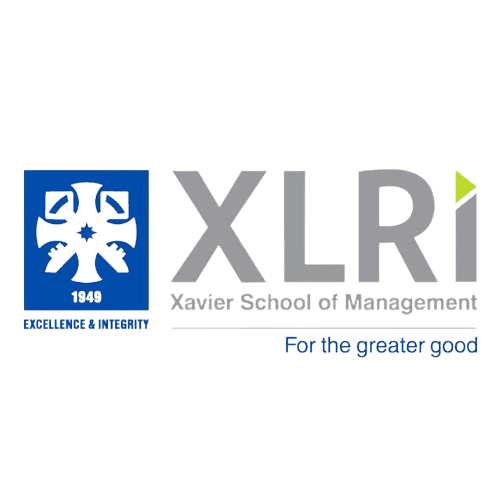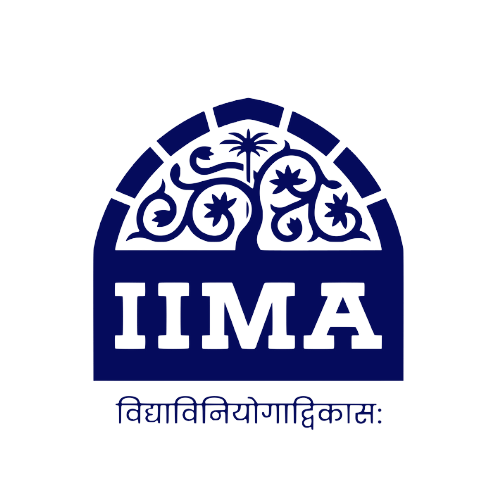Table of Contents
Classification
The Supreme Court of India defined the "creamy layer" by citing a memorandum from an Indian government office dated September 8, 1993. Indra Sawhney & Others v. Union of India, a 1992 lawsuit, the phrase was first used in the context of job reservation for particular classes. The Supreme Court has ruled that OBC children of constitutional officials shall not be accorded the advantage of reservation. Presidents, Supreme Court and High Court judges, employees of central and state bureaucracies over a certain level, public sector employees, and members of the armed forces and paramilitary troops above the rank of colonel are all examples. Those who belong to scheduled castes (SCs) and scheduled tribes (STs) are exempt from this classification and are entitled to reservation benefits regardless of family wealth. Those who are not members of preferred groups are no longer eligible for reservations, regardless of how low their family's income is Children of persons employed in trade, industry, or professions such as a doctor, lawyer, chartered accountant, income tax consultant, financial or management consultant, dental surgeon, engineer, computer specialist, film artists and other film professionals, author, playwright, sports person, sports professional, media professional, or any other vocations of like status with an annual income of more than 800,000 (Rs 8 lakh) for three consecutive years are eligible. OBC children belong to any family with a total gross annual income (from sources other than salary and agricultural land[13][14]) of less than Rs 6 lakh for three consecutive years—the creamy layer's income ceiling was raised in 1993 from 100,000 (Rs 1 lakh when the office memo was accepted) to Rs 6 lakh for three consecutive years (in May 2013). [requires citation] Individuals in the creamy layer are likewise exempt from being classified as "socially and educationally behind," regardless of their level of social/educational disadvantage.SC/ST Quota Application
The 'creamy layer' category was designed only for OBCs until 30 September 2018, but it is now being applied to Scheduled Castes and Scheduled Tribes, with the argument that it is based on untouchability or backwardness rather than economics. This only applied to reservations for promotions; the rest remained unchanged. The central government filed an appeal before the Supreme Court in December 2019 against a prior judgement allowing creamy layer to be applied to the SC/ST quota.Other Regressive Social Groups (OBC)
In India, the Other Backward Classes (OBC) are socially and educationally backward. Scheduled Classes (SC) and Scheduled Tribes (ST) are not OBCs (ST). The Indian government maintains a list of castes and groups that are classified as OBC.The following are some of the advantages of being on the OBC list:
Both the Central and State governments are implementing a variety of initiatives and programmes to help the Other Backward Classes (OBC). Among the advantages are:- There is a 27% reservation quota for seats in government jobs (such as IAS and IPS) and government institutes (like the IIMs and IITs).
- For some tests, such as the UPSC Civil Services Exam, there is a waiver of the maximum age restriction.
- There is some leeway when it comes to the number of exams tries.
- When it comes to cut-off markings, there is some wiggle room (only lower cut-off marks are usually needed to clear exams).
Will the reservation advantage be extended to all OBCs?
No.- You will only be given a reservation in jobs and educational institutions if you are a member of the Non-Creamy Layer OBC.
- If you are an OBC in the Creamy Layer, you will not be eligible for OBC reservations.
- The Central Government issued an Office Memorandum to reserve 27 percent of posts in central government services in response to the Mandal Commission's recommendations. The order was challenged in the Supreme Court by Indra Sawhney and others (Indra Sawhney and Others Vs Government of India).
- The constitutional bench of the apex court upheld the decision to reserve 27 percent reservation for OBC’s in Central Government service. But in the verdict, Honourable Supreme Court cleared that the creamy layer among OBC’s should be excluded from the reservation.
- To identify the creamy layer among OBCs, the Central Government established a panel led by Justice Ram Nandan Prasad. The recommendations of the panel were accepted by the central government.
- As a result, the Central Government issued an order establishing rules and criteria for the exclusion of Creamy Layers from the OBC category. For determining Creamy Layer among OBCs, the same criteria and rules apply.
- In terms of SC/ST reservation, there is no idea of a creamy layer.
How can you tell if you are eligible for OBC reservations?
The Central Government keeps track of which castes or tribes have been designated as OBCs. Look for your state on the Central List of OBCs. If your caste or group is included, you are eligible to apply under the OBC quota — as long as you also fulfil the Non-Creamy Layer requirements. If the applicant's community is listed above, the next step is to determine if the candidate belongs to the creamy or non-creamy layer. It's worth noting that reservations are only available to OBC non-creamy layer applicants. The status of your parents determines the creamy layer. If an applicant's parents entered the service as Class I officers before the age of 40 (direct recruitment), the applicant is considered a creamy layer for posts under the Central Government. Additionally, the applicant is considered a creamy layer if both parents entered the service as class II officers before the age of 40 (direct recruitment) and entered the service before the age of 40.Information that can assist you in obtaining Non-Creamy Layer Certificate from the OBC
- When it comes to parents who work for the government, the job status (Group A/B/C/D) is more essential than the pay. You will still be classified as Non-Creamy Layer if your parents earn more than 8 lakhs but have a lower rank than group B officers.
- However, when it comes to parents who work for themselves or own a business, yearly income is the most important factor. Salary and other kinds of income, however, should be treated separately.
- The most important thing to remember is to classify pay and other types of income separately. In three consecutive years, neither salary nor other sources of income should exceed Rs.8 lakhs.
- Examine your parent's pay for the last three years. If it was less than 8 lakhs in any of the previous three years, you are eligible for OBC Non-creamy Layer. status, provided that other sources of income are equally less than Rs. 8 lakhs.
- According to the guidelines, only sons and daughters of Group A/Class I Officers, as well as both parents of Group B/Class II Officers, are eligible for reservation. All other Officers, i.e., if only one parent is a Group B/Class II Officer, and all Officers below the Category II Officers, are eligible for the rule of reservation unless their other income, other than wages and agricultural land, exceeds the stipulated income criterion limit.
- In the case of Group B/Class II Officers, if one of the children's parents becomes a Group A/Class I Officer at the age of 40 or earlier while working as a Group B/Class II Officer, the children are not entitled to the advantage of reservation. However, if a Group B/Class II officer becomes a Group A/Class I officer after 40 years, the children are eligible for a reservation.
- Junior management grade scale 1 and above in public sector banks, financial institutions, and insurance firms will be classed as similar to government group 'A' and classified as OBC 'creamy layer.'
- The NCBC (National Commission for Backward Classes) website is one of the best resources for any questions about OBC reservations. Refer to the following documents if you have any more questions or concerns:
- Reservation criteria for OBCs differs significantly from that of EWSs. Don't get things mixed up. The Income and Asset Certificate required for Economically Weaker Sections (EWS) in the General Category differs from the Income and Wealth Certificate required for the Non-Creamy Layer of the Other Backward Castes (OBC).
- All executive-level, board-level executive, and managerial-level roles in PSUs will be viewed as similar to government Group 'A' posts and will be deemed 'creamy layer'.
- Clarifications from the government on the NCL NCBC Supplementary Report
- Persmin's report on the reservation's scope
How long does an OBC Non-Creamy Layer Certificate last?
OBC applicants who meet the Income/Wealth Test requirement would be eligible for the Non-creamy Layer (NCL) Certificate. The income ceiling is set based on earnings during the previous three fiscal years preceding the year of appointment. For example, the validity of a non-creamy layer certificate issued during any month of the fiscal year 2016-17 encompassing three previous fiscal years (2013-14, 2014-15, and 2015-16) will be recognised by the appropriate authorities for any appointments or recruitments effective from April 2016 to March 2017. The appointing authority would accept a self-attested photocopy of the non-creamy layer certificate as long as the original non-creamy layer certificate was verified, as is the case with other original papers. In the case of UPSC tests, candidates are expected to have certifications that are older than the application deadline for the preliminary exam. For example, the OBC certificate for UPSC CSE Prelims 2019 should be dated before March 18, 2019. While a candidate's OBC status changes only when his or her group is removed from the OBC list, his or her creamy layer status might alter at any moment. As a result, determining a definite validity time for the OBC certificate is impossible. The validity of an OBC NCL Certificate is recognised as one year for most practical reasons. If you got your OBC NCL certificate less than a year ago, it's usually a good idea to acquire a fresh one before taking tests. Also, the OBC NCL Certificate should be obtained in either English (preferred) or Hindi.What if you're covered by the OBC creamy layer?
Candidates from the OBC creamy layer (parents with an annual income of more than Rs. 8 lakh) are considered general category students. They have no reservations when it comes to government institutions. They are able to compete on a level of general merit.Do you fall under the Non-Creamy Layer for OBC Reservation Eligibility?
Do you identify as a member of the Other Backward Classes (OBC)? What are the requirements for OBC reservations?
OBC applicants from the Non-Creamy Layer are eligible to reservations in jobs and educational institutions. However, many applicants (and even some officials) are unaware of the OBC reservation requirements. If you are a deserving OBC applicant, you should take advantage of the OBC reservation privileges (due to ignorance). We'll look at the criteria for identifying whether you're an OBC Creamy Layer or an OBC Non-Creamy Layer in this post.Other Regressive Social Groups (OBC)
In India, the Other Backward Classes (OBC) are socially and educationally backward. Scheduled Classes (SC) and Scheduled Tribes (ST) are not OBCs (ST). The Indian government maintains a list of castes and groups that are classified as OBC. The following are some of the advantages of being on the OBC list Both the Central and State governments are implementing a variety of initiatives and programmes to help the Other Backward Classes (OBC). Among the advantages are- There is a 27% reservation quota for seats in government jobs (such as IAS and IPS) and government institutes (like the IIMs and IITs).
- For some tests, such as the UPSC Civil Services Exam, there is a waiver of the maximum age restriction.
- There is some leeway when it comes to the number of exams tries.
- When it comes to cut-off markings, there is some wiggle room (only lower cut-off marks are usually needed to clear exams).
Will the reservation advantage be extended to all OBCs?
No. You will only be given a reservation in jobs and educational institutions if you are a member of the Non-Creamy Layer OBC. If you are an OBC in the Creamy Layer, you will not be eligible for OBC reservations. The Central Government issued an Office Memorandum to reserve 27 percent of posts in central government services in response to the Mandal Commission's recommendations. The order was challenged in the Supreme Court by Indra Sawhney and others (Indra Sawhney and Others Vs Government of India). The constitutional bench of the apex court upheld the decision to reserve 27 percent reservation for OBC’s in Central Government service. But in the verdict, Honourable Supreme Court cleared that the creamy layer among OBC’s should be excluded from the reservation. To identify the creamy layer among OBCs, the Central Government established a panel led by Justice Ram Nandan Prasad. The recommendations of the panel were accepted by the central government. As a result, the Central Government issued an order establishing rules and criteria for the exclusion of Creamy Layers from the OBC category. For determining Creamy Layer among OBCs, the same criteria and rules apply. In terms of SC/ST reservation, there is no idea of a creamy layer.How can you tell if you are eligible for OBC reservations?
The Central Government keeps track of which castes or tribes have been designated as OBCs. Look for your state on the Central List of OBCs. If your caste or group is included, you are eligible to apply under the OBC quota — as long as you also fulfil the Non-Creamy Layer requirements. If the applicant's community is listed above, the next step is to determine if the candidate belongs to the creamy or non-creamy layer. It's worth noting that reservations are only available to OBC non-creamy layer applicants. The status of your parents determines the creamy layer. If an applicant's parents entered the service as Class I officers before the age of 40 (direct recruitment), the applicant is considered a creamy layer for posts under the Central Government. Additionally, the applicant is considered a creamy layer if both parents entered the service as class II officers before the age of 40 (direct recruitment) and entered the service before the age of 40.Who is covered by the Non-Creamy Layer OBC?
Except for the above-mentioned employees' children, practically everyone benefits from "Non-Creamy Layer" status. You are most likely classified as Non-Creamy Layer OBC if your parents are not directly recruited Class1 (Group A) or Class2 (Group B) officials, or if they do not hold any constitutional positions (such as President, Vice President, Governor, etc.). If your parents are not government employees, their income must fall within the government's guidelines to be classified as Non-Creamy Layer OBC.OBCs' Non-Creamy Layer Status is determined by their income.
The applicant's parents' yearly income must be less than Rs. 8 lakhs to qualify as an OBC non-creamy layer candidate. Salary and agricultural revenue are not included in the yearly income calculation for creamy layer classification. When it comes to government personnel, the entering cadre/post must be taken into mind. Income from salaries and income from agricultural land are not taken into consideration when applying the "Income/Wealth Test" to assess a candidate's creamy layer status. It indicates that only the applicants will be classified as Creamy Layers if their income from sources other than salary and agriculture exceeds the income limit. The income restriction was imposed at Rs 1 lakh per year when the creamy layer concept was implemented (1993). It was thereafter increased to Rs 2.5 lakhs per annum (2004). It was raised to Rs 4.5 lakhs per annum in 2008, and then to Rs 6 lakhs per annum in 2013. The current annual limit is Rs.8 lakhs.Who has jurisdiction over the OBC Non-Creamy Layer Certificate?
The Tahsildar of the appropriate State Government usually issues the Non-Creamy Layer Certificate. The Non-Creamy Layer Certificate application process varies by state.Will the candidate's salary be used when calculating the family income for Non-Creamy Layer status?
It's worth noting that "Income" here only pertains to the income of the parents, not the candidates. A candidate's creamy layer status is established by his or her parents' position, not by his or her own status or wealth, or by that of his or her spouse (husband or wife). As a result, while assessing a person's creamy layer status, the candidate's or his or her spouse's (husband or wife) status or income will not be considered. In other words, the candidate's wealth is not taken into account while evaluating OBCs' Non-Creamy Layer Status.Information that can assist you in obtaining Non-Creamy Layer Certificate from the OBC
- When it comes to parents who work for the government, the job status (Group A/B/C/D) is more essential than the pay. You will still be classified as Non-Creamy Layer if your parents earn more than 8 lakhs but have a lower rank than group B officers.
- However, when it comes to parents who work for themselves or own a business, yearly income is the most important factor. Salary and other kinds of income, however, should be treated separately.
- The most important thing to remember is to classify pay and other types of income separately. In three consecutive years, neither salary nor other sources of income should exceed Rs.8 lakhs.
- Examine your parent's pay for the last three years. If it was less than 8 lakhs in any of the previous three years, you are eligible for OBC Non-creamy Layer. status, provided that other sources of income are equally less than Rs. 8 lakhs.
- According to the guidelines, only sons and daughters of Group A/Class I Officers, as well as both parents of Group B/Class II Officers, are eligible for reservation. All other Officers, i.e., if only one parent is a Group B/Class II Officer, and all Officers below the Category II Officers, are eligible for the rule of reservation unless their other income, other than wages and agricultural land, exceeds the stipulated income criterion limit.
- In the case of Group B/Class II Officers, if one of the children's parents becomes a Group A/Class I Officer at the age of 40 or earlier while working as a Group B/Class II Officer, the children are not entitled to the advantage of reservation. However, if a Group B/Class II officer becomes a Group A/Class I officer after 40 years, the children are eligible for a reservation.
- All executive-level, board-level executive, and managerial-level roles in PSUs will be viewed as similar to government Group 'A' posts and will be deemed 'creamy layer'.
- Junior management grade scale 1 and above in public sector banks, financial institutions, and insurance firms will be classed as similar to government group 'A' and classified as OBC 'creamy layer.'
- Reservation criteria for OBCs differs significantly from that of EWSs. Don't get things mixed up. The Income and Asset Certificate required for Economically Weaker Sections (EWS) in the General Category differs from the Income and Wealth Certificate required for the Non-Creamy Layer of the Other Backward Castes (OBC).
- The NCBC (National Commission for Backward Classes) website is one of the best resources for any questions about OBC reservations. Refer to the following documents if you have any more questions or concerns
- Clarifications from the government on the NCL NCBC Supplementary Report
- Persmin's report on the reservation's scope
How long does an OBC Non-Creamy Layer Certificate last?
OBC applicants who meet the Income/Wealth Test requirement would be eligible for the Non-creamy Layer (NCL) Certificate. The income ceiling is set based on earnings during the previous three fiscal years preceding the year of appointment. For example, the validity of a non-creamy layer certificate issued during any month of the fiscal year 2016-17 encompassing three previous fiscal years (2013-14, 2014-15, and 2015-16) will be recognised by the appropriate authorities for any appointments or recruitments effective from April 2016 to March 2017. The appointing authority would accept a self-attested photocopy of the non-creamy layer certificate as long as the original non-creamy layer certificate was verified, as is the case with other original papers. In the case of UPSC tests, candidates are expected to have certifications that are older than the application deadline for the preliminary exam. For example, the OBC certificate for UPSC CSE Prelims 2019 should be dated before March 18, 2019. While a candidate's OBC status changes only when his or her group is removed from the OBC list, his or her creamy layer status might alter at any moment. As a result, determining a definite validity time for the OBC certificate is impossible. The validity of an OBC NCL Certificate is recognised as one year for most practical reasons. If you got your OBC NCL certificate less than a year ago, it's usually a good idea to acquire a fresh one before taking tests. Also, the OBC NCL Certificate should be obtained in either English (preferred) or Hindi. What if you're covered by the OBC creamy layer? Candidates from the OBC creamy layer (parents with an annual income of more than Rs. 8 lakh) are considered general category students. They have no reservations when it comes to government institutions. They are able to compete on a level of general merit.Conclusion
The goal of OBC (non-creamy layer) quota is to help the most deserving applicants from the backward classes. Except for the most wealthy, the majority of OBC candidates fall within the Non-Creamy Layer OBC category. Many qualified individuals, however, are unaware of how to get the necessary certificate. To make matters worse, meritorious candidates are frequently denied the OBC non-creamy layer certify can claim your deserved quota without fear of persecution from the authorities if you read the government's regulations regarding non-creamy layer requirements in depth. If you have any problems with the OBC non-creamy layer certificate, please let us know in the comments. Our crew, as well as fellow readers and hopefuls, will undoubtedly assist.ate by dishonest and incompetent authorities.OBC Lawyer Income
The Ministry of Social Justice and Empowerment will initiate discussions and investigate the possibility of raising the ceiling limit from the current $8,000 to the suggested $12,000. The government will reconsider whether wage and agricultural revenue should be included in the computation of yearly income. According to a top source, "The government has been requested to look into the matter again. The Cabinet notice that had been shown has been taken down. We'll start the If the parents' gross yearly income does not exceed Rs. 8 lakhs, OBCs are eligible for a 27 percent quota in higher educational institutions and public sector jobs. An individual with a yearly income of more than Rs. 8 lakh is considered a "creamy layer" and is ineligible for reservation benefits. Consultation process all over again." If the parents' gross yearly income does not exceed Rs. 8 lakhs, OBCs are eligible for a 27 percent quota in higher educational institutions and public sector jobs. An individual with a yearly income of more than Rs. 8 lakh is considered a "creamy layer" and is ineligible for reservation benefits. Every three years, the income conditions are generally revisited. The most recent review occurred in 2017, when the BJP-led NDA government boosted it from 6,000 to 8,000 people. Under the Congress-led UPA administration, the gross annual income threshold was raised from 4.5 lakh to 6 lakh in 2013. However, in March 2019, the ministry appointed a group led by former secretary BP Sharma to prepare for the 2020 review. The panel was established not just to evaluate the gross annual income ceiling, but also to "revisit the parameters" for defining the creamy layer criterion, which had been established in 1993. The panel had to decide whether or not to include salary and agricultural revenue in calculating gross yearly income. The addition will improve OBC reservation access for the poorest of the poor, particularly in rural India. Following the study, the ministry requested that salaries be factored into the calculations for utilising the Mandal reserve benefit, a percentage of gross yearly income is required. In the year 2020, a Cabinet memo was distributed. However, the more important political decision could not be made. This would have prevented strong interests, such as senior government officials, from benefiting from the OBC reservation. The political consideration of assembly elections in Uttar Pradesh and Punjab is behind the Centre's decision to re-examine the creamy layer. OBCs make up around 45 percent of the population in Uttar Pradesh and nearly a third of the population in Punjab. Any change in criterion might throw off the delicate equilibrium that has been established through time.OBC Creamy Layer vs. Non-Creamy Layer: What's the Difference?
Other Castes Who Have Been Relegated to the Periphery (OBC) India is a country divided into several communities and groups based on religion and culture. Hinduism is one of the country's most widely practised faiths, with various caste groupings. Although the caste system is no longer publicly practised in independent India, the social hierarchy that was established remains. The upper castes have traditionally had more advantages and opportunities than the lower castes. Protective discrimination rules were implemented in order to achieve equality among the country's citizens. The Scheduled Castes (SC), Scheduled Tribes (ST), and Other Backward Castes (OBC) are the groups that benefit from the quota system (OBC). The Mandal Commission, headed by Bindeshwari Prasad Mandal, incorporated the OBCs in the country's reservation system in 1979. This Commission was established to identify those in society who are socially or educationally disadvantaged. The panel then suggested that OBC persons be given a 27 percent quota in public universities and other government services. OBC is separated into two categories: NCL-OBC & CL-OBC-OBC-OBC-OBC-OBC-OBC-OBC The names of all castes and groups classified as OBC are kept on file by the Central Government. The OBC group is classified into two categories: OBCs from the Non-Creamy Layer (OBC- NCL) OBC-CL: OBCs from the Creamy Layer. In this article, I'll go through both portions of OBC in detail, as well as the variations between them. Candidates from the OBC- Creamy Layer are deemed to be more educated and richer than those from the OBC- Non- Creamy Layer, and hence do not receive reservation privileges in examinations and jobs. Students in the Creamy Layer are given the same opportunities as General candidates. The Sattanathan Commission used the term "Creamy Layer" in 1971 to describe the more advanced and well-off members of the Other Backward Castes. According to the above-mentioned commission, persons from the "creamy layer" should not be granted reservation privileges in the country. Because the Creamy Layer has more resources for schooling and life, they should not be eligible for government-sponsored educational and professional advantages. In 1971, the creamy layer income criterion was a family income of more than 1,00,000 rupees per year. In 1993, the income threshold was raised to Rs. 2.5 lakhs, then to Rs. 4.5 lakhs in 2004 and finally to Rs. 6 lakhs in 2013. In 2017, the OBC-Creamy layer income requirements were revised, and it was determined that persons with an annual family income of more than Rs. 8 lakhs would be deemed members of the "Creamy Layer." The National Commission for Backward Classes (NCBC) advocated in 2015 that the minimum ceiling for Ceiling Layer be increased to Rs. 15 lakhs from Rs. 8 lakhs. It was also suggested that OBC 'More backward' and 'very backward' categories were created, and the reserved quota of 27 percent was split by the proportion of the population in each group. As a result, the advantages of the quota would not accrue to the stronger OBCs. However, the Indian government has yet to adopt this idea. In 1971, the creamy layer income criterion was a family income of more than 1,00,000 rupees per year. In 1993, the income threshold was raised to Rs. 2.5 lakhs, then to Rs. 4.5 lakhs in 2004 and finally to Rs. 6 lakhs in 2013. In 2017, the OBC-Creamy layer income requirements were revised, and it was determined that persons with an annual family income of more than Rs. 8 lakhs would be deemed members of the "Creamy Layer." The National Commission for Backward Classes (NCBC) advocated in 2015 that the minimum ceiling for Ceiling Layer be increased to Rs. 15 lakhs from Rs. 8 lakhs. It was also suggested that OBCs be subdivided into 'backward, “more backward,' and 'very backward' categories, with the 27 percent reserved quota distributed according to the proportion of the population in each category. As a result, the advantages of the quota would not accrue to the stronger OBCs. However, the Indian government has yet to adopt this idea.What exactly do you mean when you say OBC Non-Creamy Layer?
If the total family income is less than Rs. 8 lakhs per annum, the family is classified as OBC non-creamy. To be eligible for OBC Non-Creamy Layer privileges, an applicant must submit an OBC- NCL certificate legally signed by the authorities of a State while applying for government colleges or employment.Qualification for the OBC Non-Creamy Layer Certificate
To determine whether a candidate belongs to the Creamy Layer or the Non-Creamy Layer, a set of criteria must be met. 1. Family Annual Income: An OBC NCL certificate may only be obtained if the family's annual income is less than Rs. 8 lakhs. Agriculture or agricultural revenue is not included in the overall income. 2. Parents in the Central Government: If the candidate's parents are in the Central Government, the candidate falls into the Creamy Layer. However, if his or her parents work in the Group C or D categories, the candidate is qualified for an OBC Non-Creamy Layer certificate. 3. If the candidate works for the Central Government, he or she is qualified to apply for an OBC- NCL certificate if he or she works for the Central Government in the Group B category. The sole stipulation is that his parents should not be eligible for any government benefits, including pensions. 4. If a candidate's spouse works for the government: If a woman's husband works for the government, she can apply for an OBC NCL certificate as long as her parents do not get any government money.The Advantages of an OBC Non-Creamy Layer Certificate
In order to get an OBC Non-Creamy Layer Certificate, the candidate must first determine if his or her caste or group is listed in the Central List of OBCs. Following confirmation of the caste's name in the list, the candidate must determine if he or she belongs to the non-creamy layer. The procedure for acquiring an NCL certificate differs by state.- People holding an OBC NCL certificate are eligible for a 27% reservation quota while applying for government jobs such as civil services, banking, and SSC. They may also be eligible for reservations in government institutions like as IITs and IIMs.
- Many examinations allow OBC NCL applicants to apply with an age limit that is lower than the maximum age limit.
- Candidates from the non-creamy layer of the OBC are typically given more chances to sit in examinations.
- When compared to the general category, OBC NCL candidates frequently have lower cut-off marks.

